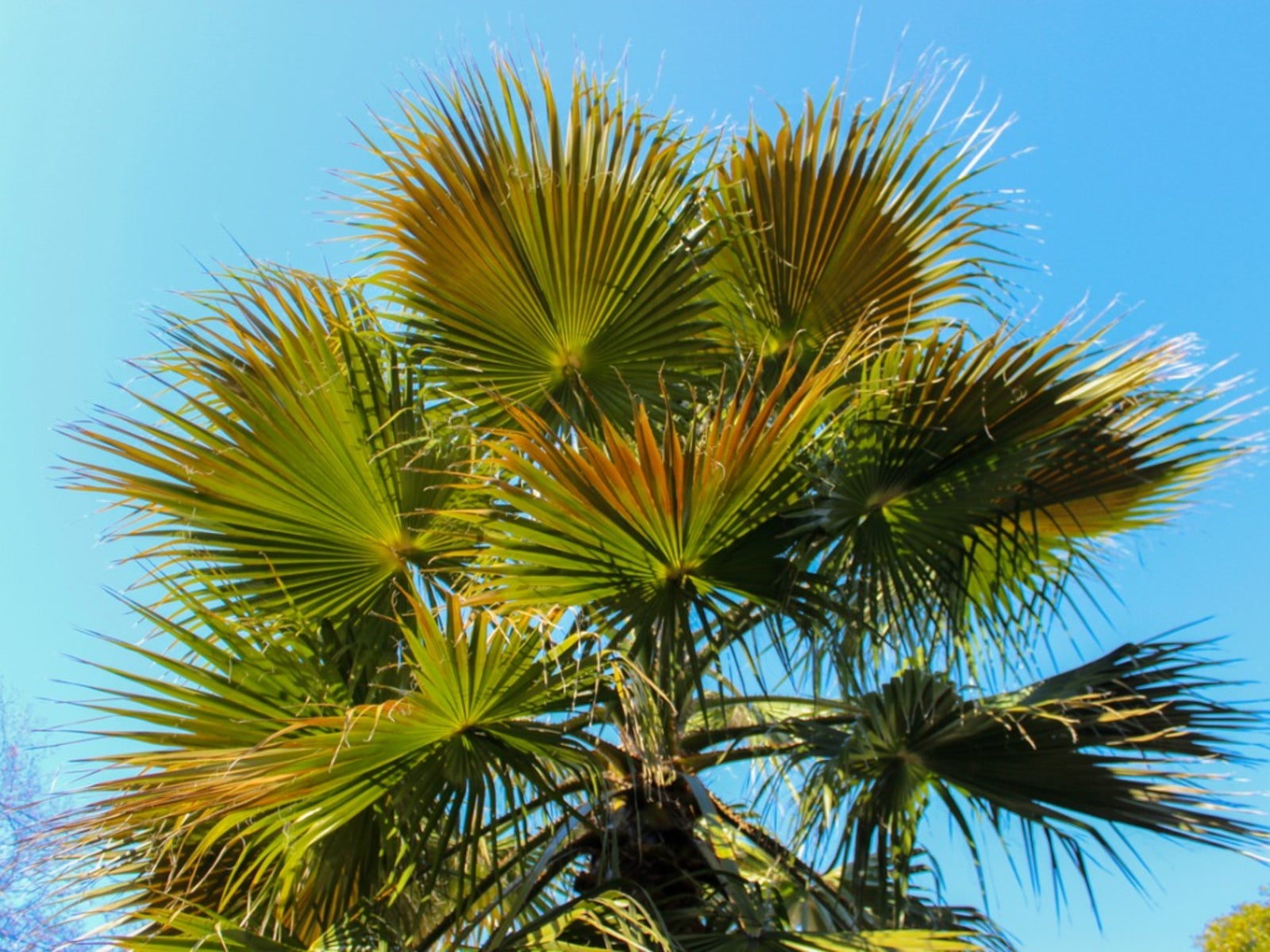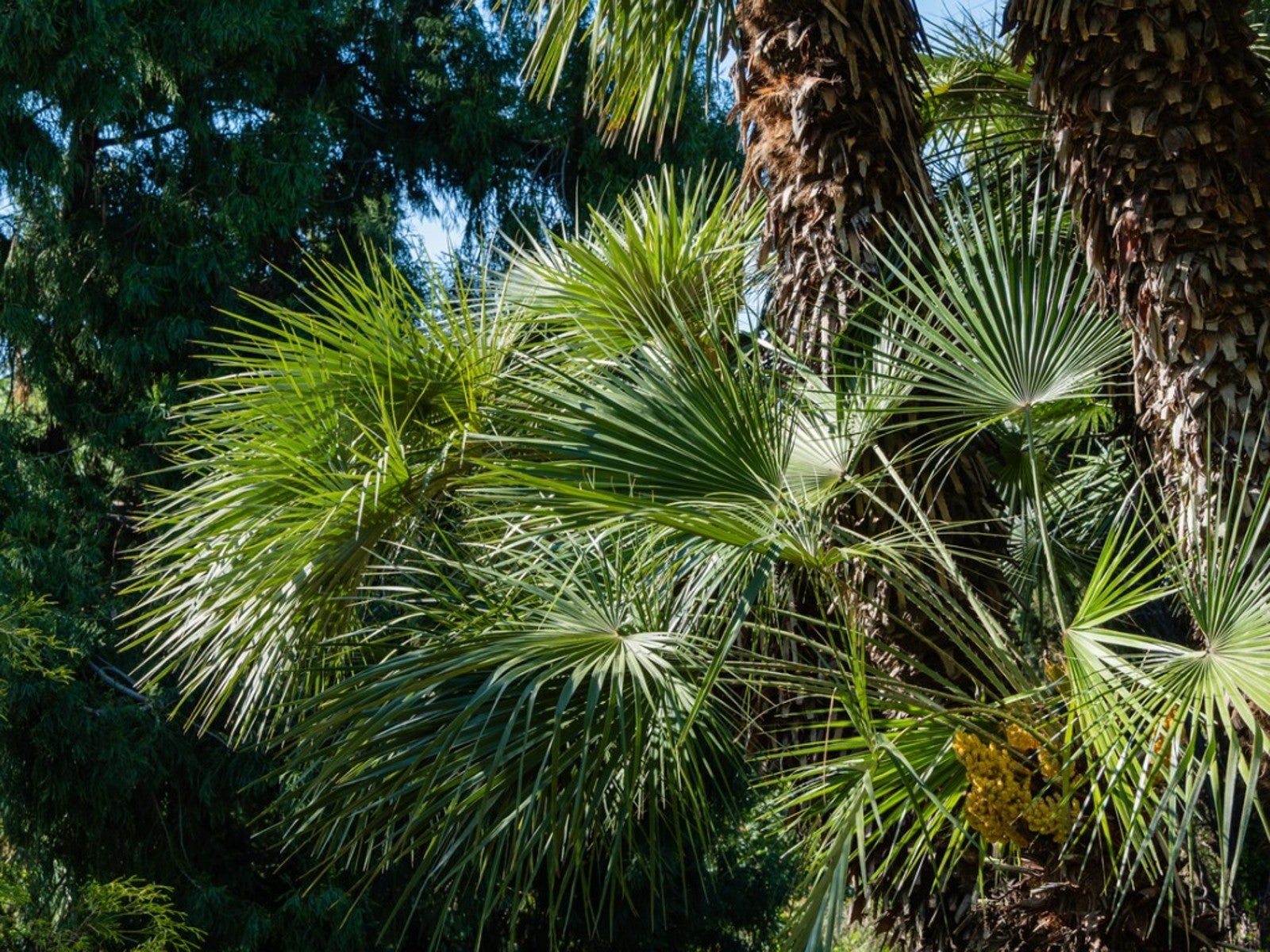Growing Windmill Palms - Windmill Palm Planting And Care

If you are searching for a tropical plant specimen that will lend that trade-wind ambiance to your landscape during temperate months and yet, is still hardy enough to survive a frigid winter, look no further. The windmill palm (Trachycarpus fortunei) is just such a specimen. Not native to North America, but able to survive in USDA zones 8a through 11, windmill palm trees are a hardy palm variety (to 10 degrees F./-12 C. or lower) that can withstand a layer of snow. Also known as Chusan palm, windmill palms are named for the large rounded leaves held above a slender stalk, creating a “windmill” like form. Windmill palm trees are covered with dense, brown, hairy fibers with the 1 1/2 foot (46 cm.) long, fan-shaped fronds extending outward from jagged petioles. Although the windmill palm can attain heights of 40 feet (12 m.), it is a slow growing variety and generally is seen between 10 and 20 feet (3-6 m.) by about 12 feet (3.5 m.) wide. Windmill palm trees flower too. Male and female flowers are 2 to 3 inches (5-8 cm.) long, dense, yellow and borne on separate plants held close to the trunk of the tree. The trunk of this palmate appears to be sheathed in burlap and is quite slender, 8 to 10 inches (20-25 cm.) in diameter, tapering downward from the top.
How to Plant a Windmill Palm Tree
Windmill palm planting often occurs in confined areas. Utilized as an accent, specimen plant, patio, or framing tree, and as a container plant, windmill palm trees may be grown either indoors or outside. Although it makes a fabulous focal point and is often used to set off a patio or sitting area, this palm tree shines when planted in groupings of 6 to 10 feet (2-3m.) apart. Growing windmill palms does not require any specific soil type. Windmill palms grow best in shade or partial shade; but as it is a fairly tolerant species, they may also do well situated in a sun exposure in the northern range when supplied with ample irrigation. When growing windmill palms, it is important to maintain a routine watering schedule. As said, these trees are not soil particular, however, they do prefer fertile, well-drained soils. Windmill palm planting should occur with some consideration to sheltering, as winds will cause leaf shredding. Despite this caution, windmill palm planting does occur successfully close to ocean shores and is tolerant of salt and winds there. As the windmill palm is a non-invasive specimen, propagation is most commonly achieved through seed dispersal.
Windmill Palm Problems
Windmill palm problems are minimal. Generally pest-free in the Pacific Northwest, windmill palms may be attacked by scale and palm aphids in other climates. Windmill palm problems via disease are also moderate, however, these trees may be susceptible to leaf spots and lethal yellowing disease.
Gardening tips, videos, info and more delivered right to your inbox!
Sign up for the Gardening Know How newsletter today and receive a free copy of our e-book "How to Grow Delicious Tomatoes".

Amy Grant has been gardening for 30 years and writing for 15. A professional chef and caterer, Amy's area of expertise is culinary gardening.
-
 Looking For Plants To Give You The Soft And Fuzzies? Try These 5 Fuzzy Leaf Plant Options
Looking For Plants To Give You The Soft And Fuzzies? Try These 5 Fuzzy Leaf Plant OptionsLovers of texture, drama, silver foliage and tactile plants will adore these special sensory garden additions. These fuzzy leaf plant options will leave you all aglow
By Susan Albert
-
 Get Ready For A Summer Of Hummers! Grow These Full Sun Hummingbird Plants and Flowers
Get Ready For A Summer Of Hummers! Grow These Full Sun Hummingbird Plants and FlowersIf you’re lucky enough to enjoy a sunny backyard, make sure you are maxing out on your pollinator opportunities and grow these full sun hummingbird plants and flowers
By Tonya Barnett
-
 Propagating Windmill Palms: How To Propagate A Windmill Palm Tree
Propagating Windmill Palms: How To Propagate A Windmill Palm TreeThe following article can help you learn how to propagate a windmill palm tree from its own seed with tricks even a novice gardener can learn. You may also find success growing palm trees from cuttings. Click here for more information.
By Bonnie L. Grant
-
 What Is A Waggie Palm Tree: Learn About Growing Waggie Palms
What Is A Waggie Palm Tree: Learn About Growing Waggie PalmsUsing palms as focal points is an obvious choice for such schemes but most are not reliably hardy in colder climes. Enter the waggie palm. This space saving, cold tolerant palm tree has endless appeal and ease of care. Learn more in this article.
By Bonnie L. Grant